Few computer-related disasters can drain the colour out of your face faster than shedding a doc you’ve been busily engaged on. Whether or not your Mac crashed, froze, you forgot to save lots of, otherwise you by chance clicked on delete, it will probably really feel like an prompt catastrophe. However, all won’t be misplaced. We’ll present you how one can get well that vanished Phrase doc.
Actually, if every part is working because it ought to, it’s fairly arduous to lose a file in Phrase. The software program has an autosave function that signifies that, within the occasion of an accident, you need to nonetheless have the majority of your work out there, besides something you will have completed within the final ten minutes earlier than the file disappeared. Our prime tip could be to save a doc as quickly as you begin engaged on it to make sure that it autosaves recurrently.
PROMOTION
EaseUS Information Restoration Wizard | Recuperate Unsaved Recordsdata
EaseUS Information Restoration Wizard simplifies the method of recovering unsaved Phrase paperwork, Excel sheets, PowerPoint displays, and PDF recordsdata on Mac. By scanning your system, arduous drive, momory card, USB and different storage media on Mac, it identifies recordsdata that haven’t been saved and presents a preview so that you can assessment your recoverable recordsdata with ease. Now 25% OFF Unique Code: MACWORLD25.
However that’s not why you’re right here. If you happen to’ve opened Phrase and may’t discover that doc you have been engaged on – don’t panic! There’s a good likelihood which you could get your doc again. On this article, we’ll run via the varied methods you’ll be able to get well an unsaved or deleted Phrase doc.
Find out how to get well an unsaved Phrase doc
We’ll run via a couple of seemingly situations you is perhaps confronted with when making an attempt to get well that Phrase doc. As we mentioned above, the excellent news is that Phrase for Mac has a built-in autosave function referred to as AutoRecover. Because of this Phrase is quietly saving the doc you’re engaged on with out you needing to manually inform the software program to take action.
For this function to perform correctly, you’ll have to initially save the doc with a reputation after which Phrase will make incremental saves each ten minutes. Nonetheless, even in case you haven’t completed this, Phrase will nonetheless save your doc and you need to be capable of discover a model of it within the AutoRecover folder.
Beneath we’ll run via the right way to get to the AutoRecover folder and another steps you’ll be able to take to get well your doc.
Situation 1: You’re engaged on a Phrase doc and you must restart your Mac with no likelihood to save lots of first
- Resolution: Open Phrase once more to see an autosaved model of your doc.
The excellent news is that in case you are utilizing an up-to-date model of Phrase then simply opening up Phrase once more ought to get well the doc—or no less than a really latest model of it.
It is because Phrase autosaves your doc – even in case you haven’t saved it but.
Fast Tip – Find out how to activate AutoSave
Whereas Phrase will attempt to save each doc in some type, it’s a good suggestion to arrange the AutoSave function manually as nicely. This solely takes a second as you’ll discover the AutoSave button displayed on the prime of any window with an open Phrase doc. It could default to the off place, so simply click on it to allow the function and make sure that your work doesn’t abruptly disappear.
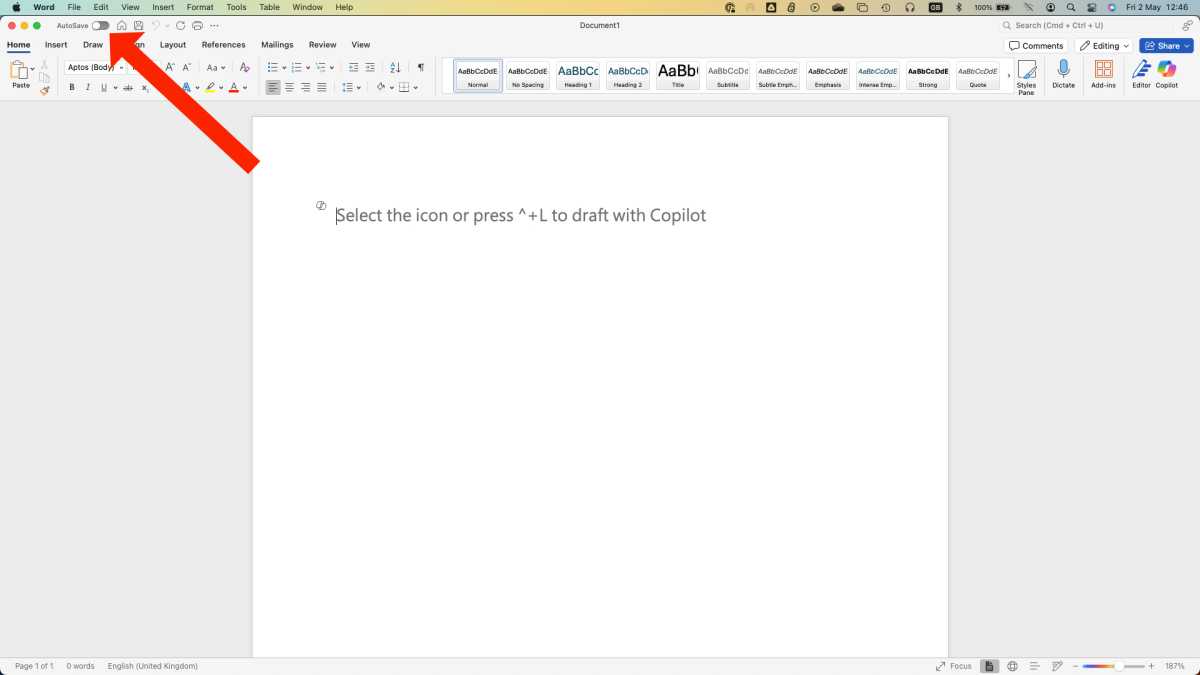
Martyn Casserly
Situation 2: Opening Phrase doesn’t load up the doc you have been engaged on
- Resolution: Discover it within the AutoRecovery folder.
- Open the Finder.
- Click on on Go within the menu.
- Click on on Go To Folder.
- Paste within the following:
~/Library/Containers/com.microsoft.Phrase/Information/Library/Preferences/AutoRecovery - This can open your AutoRecovery folder the place one can find the AutoRecovery variations of your paperwork though you didn’t save them.
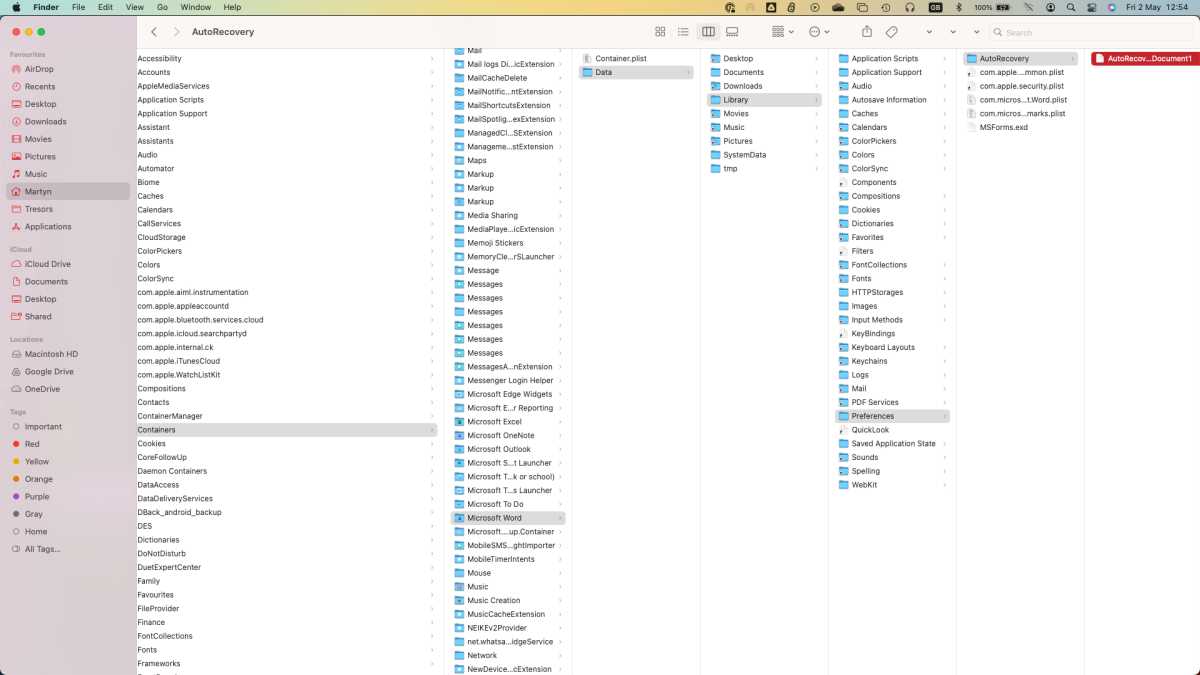
Martyn Casserly
Having discovered the doc it’s possible you’ll not be capable of open it, by which case it’s possible you’ll have to strive the steps within the subsequent situation…
Situation 3: Phrase gained’t open the AutoRecovery model of your doc
- Resolution: Drag the file into a distinct textual content editor app
Whenever you attempt to open the AutoRecovery file (both by clicking on it or making an attempt to pull it onto the Phrase icon within the Dock) you may even see a message claiming that Phrase skilled an error making an attempt to open the file. One of many options could also be to open the Textual content Restoration Converter. Right here’s what we did:
- Open TextEdit.
- Drag the file onto the TextEdit icon within the Dock.
- Copy the textual content into a brand new file in Phrase.
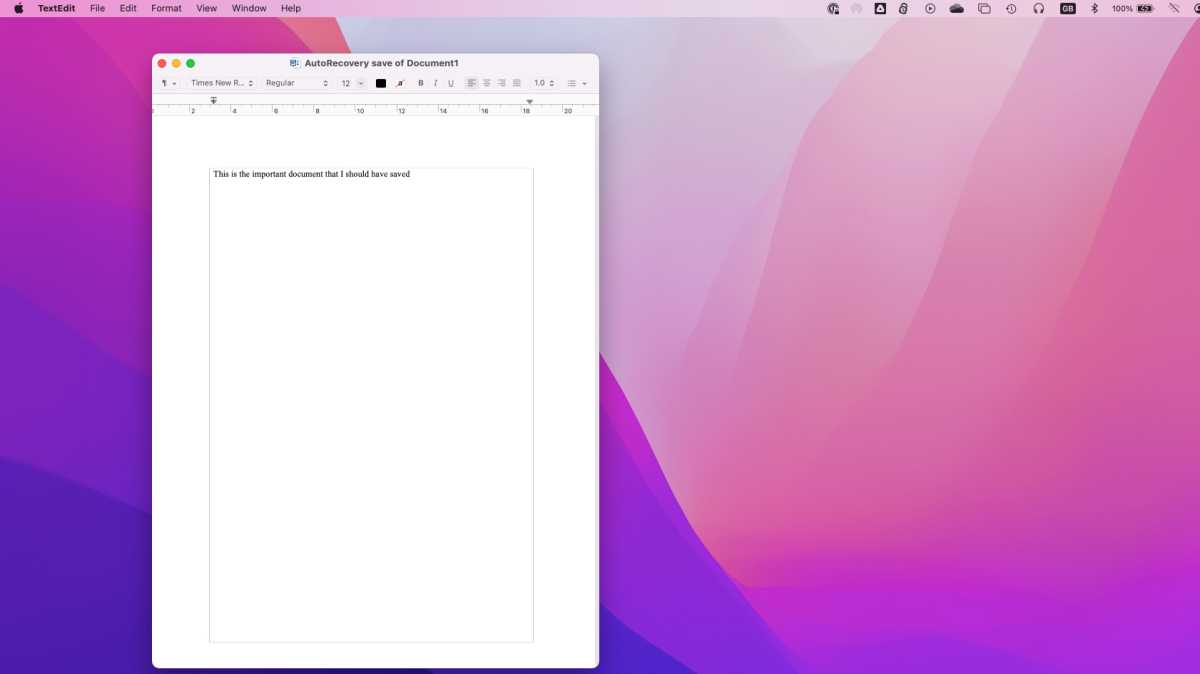
Martyn Casserly
Situation 4: In a second of insanity you clicked on Don’t Save or Delete
- Resolution: Discover the newest model within the AutoRecovery folder
The good information is that even in case you didn’t save your Phrase doc – even one of the best of us have clicked Don’t Save by chance once we have been closing paperwork – you’ll be able to get well it from the AutoRecovery folder, as we described in Situation 2.
Fortunately there’s a easy approach to view that folder. Simply click on to Finder and choose Go > Go To Folder and paste the next:
~/Library/Containers/com.microsoft.Phrase/Information/Library/Preferences/AutoRecovery
This can open your AutoRecovery folder the place one can find the AutoRecovery variations of your paperwork though you didn’t save.
Situation 5: You made a mistake and need to return to an older model
Resolution: Browser via latest variations
It’s not at all times the case that you simply lose the entire doc. Generally you would possibly lose among the work you’ve completed, which could be simply as traumatic in case you’ve spent a variety of time on it. So long as you’ve made an preliminary save of the doc you need to be capable of browse the model historical past:
- With the Phrase doc open click on on File.
- Choose Browse Model Historical past.
- Within the right-hand column, you’ll see the model historical past. Find a model of the doc from earlier than you made the errors you want to appropriate.
- Click on on Open Model. This can open a second copy of your doc.
- Both click on on Restore (to return to this model of the doc) or Evaluate (in case you don’t need to get well the entire doc and simply need to copy and paste the bit you want).
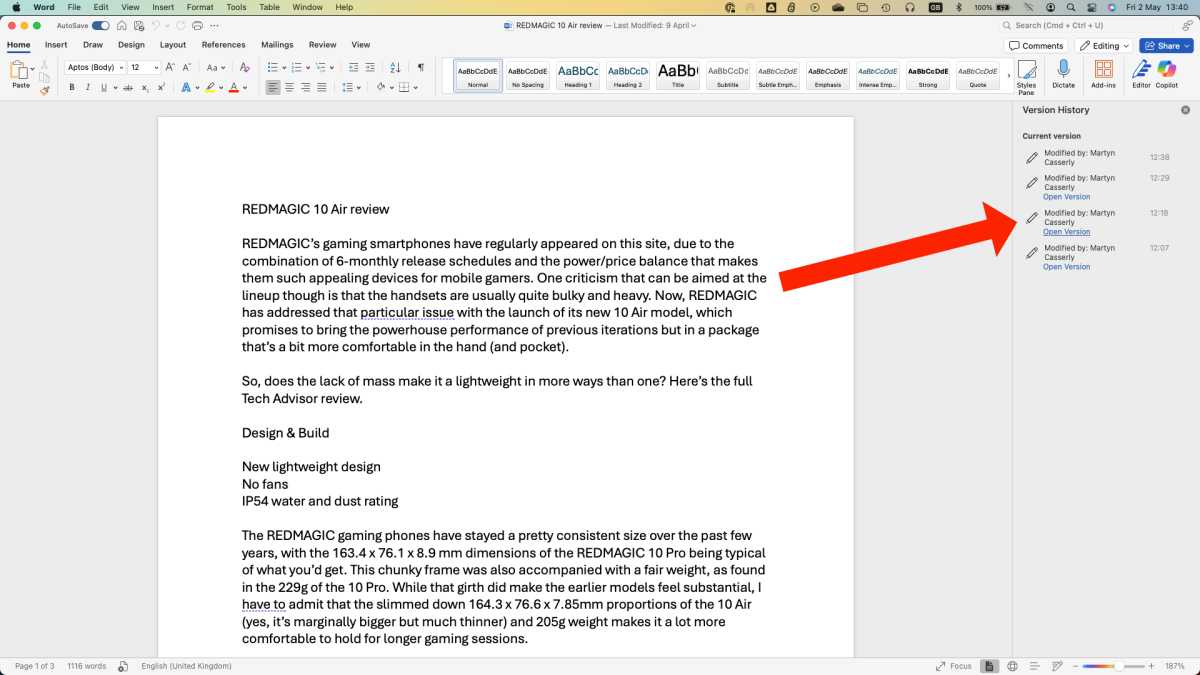
Screenshot
Martyn Casserly
Different methods to get well a misplaced Phrase doc
If the above doesn’t work, or your model of Phrase is older than the present one, strive the steps we define under.
Test the Trash
In some circumstances, your file is perhaps lacking since you deleted it. It’s simply completed if you end up making an attempt to make room in your Mac and also you take away a load of outdated recordsdata solely to comprehend that considered one of them was essential. Fortunately this isn’t as disastrous because it sounds. The doc would possibly nonetheless be discovered within the Trash.
- Click on on the Trash can icon within the Dock to open it.
- You’ll now see the contents of the Trash. Search for your file. If you happen to click on on a file and press House Bar you might be able to see a preview of it.
- If you happen to don’t see your file search for a ‘Recovered Objects’ folder within the Trash. It’s doable that your file is positioned in that.
- If it’s there you’ll have to right-click on it and select Put Again. This can place the file again within the folder the place it was initially saved and you’ll proceed to work on it.
Recuperate outdated variations of paperwork by way of Time Machine
Whereas Phrase has its personal Model Historical past that solely works in case you have saved the file sooner or later. Plus, in case you have subsequently deleted the doc by chance you’ll be able to’t open it to open an older model.
In that case, you would strive Time Machine.
When you have a Time Machine backup on an exterior drive you’ll be able to roll again to a time when a deleted or corrupted file was nonetheless in your system.
- Go to the folder the place you’d hope to see your file, or an earlier model of your file.
- Open Time machine and flick again via the day, weeks or months to see in case your file is there. We’ll maintain our fingers crossed for you.
- Comply with our
Full information to Time Machine for directions on the right way to get well your recordsdata.
In case you are unlucky sufficient to not have a backup routine then we propose starting one instantly. Macs are very dependable machines, however there may be at all times a danger of one thing going fallacious, so it’s finest to guard your self in opposition to potential catastrophe.
Strive taking a look at our
Find out how to again up a Mac function that highlights a number of options for this important follow.
What in case you by no means saved your file – if in a second of insanity, you clicked on Don’t Save fairly than Save? It occurs! Are you able to retrieve your file?
Recuperate misplaced docs from the Momentary folder
Your Mac additionally has a folder the place it’d briefly maintain recordsdata. The Momentary folder isn’t straightforward to seek out although.
To search out the Momentary folder, use Terminal (discover it in Functions > Utilities > Terminal, or Highlight seek for Terminal by urgent Command + House.
- Open Terminal
- Kind: open $TMPDIR
- Press Enter.
Inside this TMP folder, you need to discover a folder referred to as Temporaryitems. It’s doable that your doc is perhaps inside.
Use information restoration software program
There are third-party apps that might be able to aid you get well your doc if the above recommendation doesn’t assist. Try our spherical up of one of the best information restoration apps for Mac. Our prime selections embrace the next:
If you happen to would fairly not pay, there’s a free model of EaseUS’s Recuperate Wizard for Mac that is perhaps adequate in your wants.
Find out how to discover AutoRecovery in older variations of Phrase
Because you won’t have the most recent model of Phrase we’ll element the steps under so that you can comply with to find that Phrase AutoRecovery folder.
Find out how to discover the AutoRecovery folder in Phrase 2016
Right here’s the right way to discover AutoRecover in Phrase 2016:
- In Phrase 2016, the AutoRecovery folder is buried deep within the system and requires your Mac to show hidden recordsdata, so step one is to disclose these secret folders, to take action we suggest following our recommendation on the hyperlink under, though the important thing mixture to make use of is cmd + shift + . (full cease). Learn: Find out how to present hidden recordsdata and folders on a Mac.
- With this completed you’ll have to open Finder then click on on the Dwelling icon within the left-hand column (it’s often your title). Now navigate to the next folder:
Library/Containers/com.microsoft.Phrase/Information/Library/Preferences/AutoRecovery/
- When you have any AutoRecovery recordsdata then they are going to be in right here. One factor to recollect is that AutoRecovery recordsdata are momentary and solely exist in the event that they assume that Phrase shut down unexpectedly. So, in case you clicked Don’t Save fairly than Save while you have been closing the doc there gained’t be an AutoRecovery file for it.
Find out how to discover the AutoRecovery folder in Phrase 2011
In case you are utilizing Phrase 2011 it’s straightforward to find the AutoRecovery folder:
- Click on on the File choice within the Menu bar then seek for Autorecover.
- If you happen to use Phrase usually then there is perhaps a couple of completely different Autorecover recordsdata, so examine the date to see which one matches your lacking merchandise.
- When you’ve discovered the doc simply click on on it to open it up, then bear in mind to put it aside once more underneath a brand new title.
Even in case you don’t discover your doc within the AutoRecovery folder, it might not be the case that it isn’t there. Recordsdata within the AutoRecover folder don’t at all times present up.
We’ve got first-hand expertise of this. Previously, our Mac has ‘helpfully’ saved a Phrase doc within the Workplace 2011 AutoRecovery folder. This may not be a difficulty, apart from the truth that once we then accessed the folder (only a fast search in Highlight for Workplace 2011 AutoRecovery) the recordsdata have been nowhere to be seen.
As you’ll be able to see from this display seize, the newest file in our AutoRecovery folder was from 5 March, however we all know that there are newer recordsdata saved there.
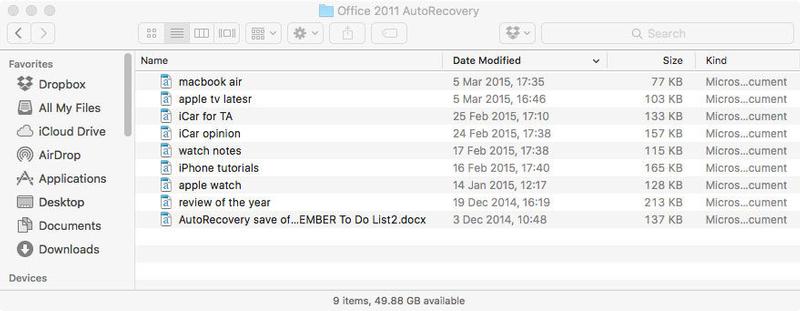
The issue with the AutoRecovery file is that it’s positioned in a Library folder that isn’t seen by default, and that may have some impression on whether or not your recordsdata are seen or not. Thankfully, there’s a approach to find the file.
Find out how to view recordsdata in Workplace 2011 AutoRecovery folder
- Go to the Finder, and press Alt (or Choice) whereas deciding on Go from the menu on the prime of the web page. This can make the Library folder seen (in case you don’t press Alt you gained’t see it – and you must maintain Alt pressed or it should vanish).
- Click on on Library to open the Libray folder.
- Find the next folder: Software Help > Microsoft > Workplace > Workplace 2011 AutoRecovery.
- Whenever you see the Workplace 2011 on this view you need to be capable of find your file.
Tricks to keep away from misplaced Phrase recordsdata
Keep away from this nightmare occurring once more – comply with the guidelines under.
Save first, save usually
It goes with out saying that you need to save ceaselessly particularly in case your Mac is usually a bit unreliable.
You might be able to depend on Phrase autosaving for you, however keep in mind that you must save the file first to actually profit from Autosave.
Change the autosave frequency
A useful factor to know is which you could cut back the gaps between autosaves on Phrase for Mac. By default they’re set at ten minute intervals, but it surely’s straightforward to make them extra frequent.
In Phrase go as much as the Menu bar on the prime of the display and click on on Phrase. From the dropdown menu choose Preferences after which within the Output and Sharing part you’ll see a disk icon named Save. Click on this and also you’ll now be capable of alter the time between saves by coming into a worth into the ‘Save each X minutes’ field on the backside.
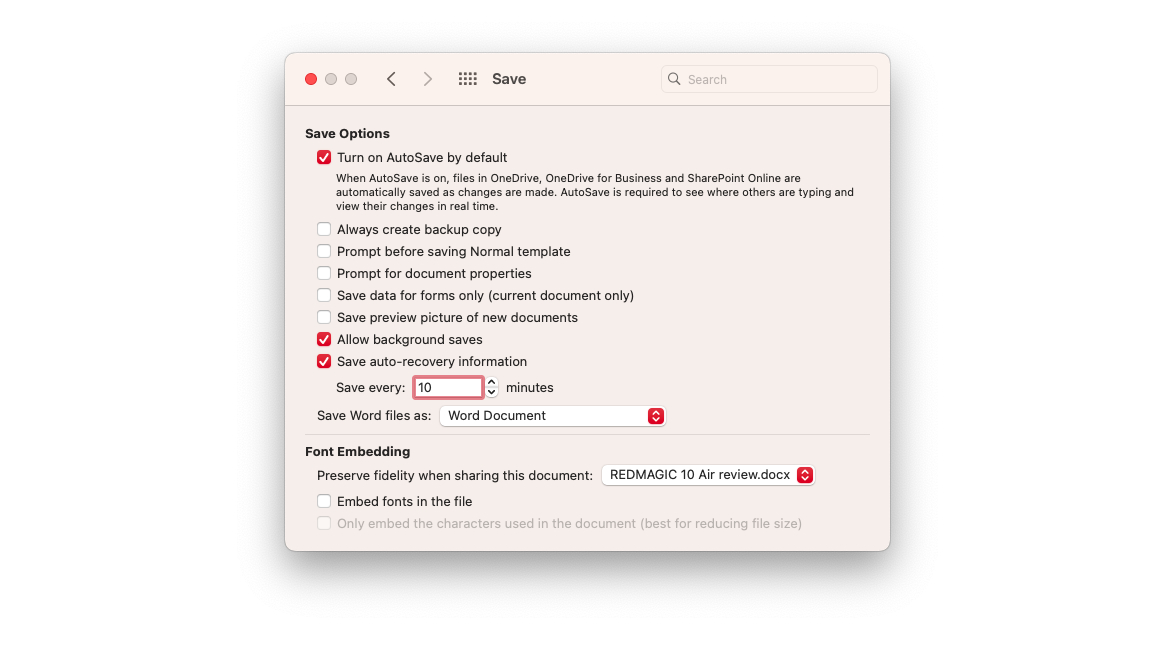
Martyn Casserly
Whereas it is perhaps tempting to set it as little as doable, keep in mind that Phrase’s efficiency may very well be be hampered barely if it’s saving each minute, particularly in case you are engaged on a big file. Experiment to see what setting works finest for you.
You might also discover considered one of these articles useful:
Find out how to get well deleted recordsdata.
Need to get to know Phrase higher? Learn our
Prime ideas for Phrase for Mac.


